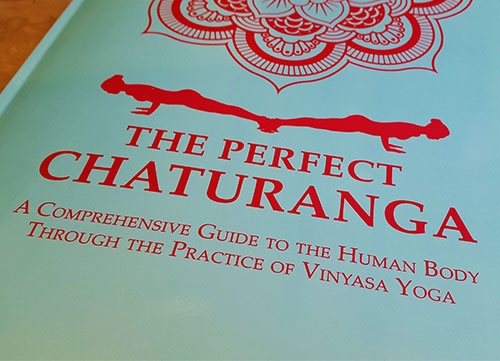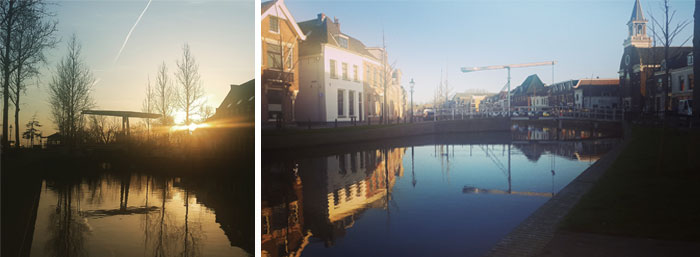What began as a mission to spread the practice of safe and intelligent vinyasa flow yoga has evolved into an extraordinary quest of my heart. I initially thought The Perfect Chaturanga would be a simple yoga anatomy and injury prevention book but realized early on that there was so much more to share. — Jennilee Toner
Earlier this month, I spent four days in the beautiful town of Weesp (near Amsterdam) where the Ekhart Yoga studios are, learning hands on anatomy from renowned yoga anatomy teacher, Jennilee Toner.
My experience of the course
The course included daily themed meditations, anatomically focused vinyasa flow asana classes, and interactive lectures. We covered a lot in four days, but what I loved most was the delivery of the information. This course used humour, analogies, and stories to bring anatomy alive, and intelligently connected ancient yogic philosophy with modern anatomy.
Each day started with a 30 minute themed meditation, followed by an anatomically focused vinyasa flow asana class. I’ve had a few one off yoga classes in the past that have been anatomical in language, but in the context of learning yoga anatomy, it was great to do this four days in a row.
It not only helped me to embody the information that was being delivered, but it got me to think in more depth about the language I use as a yoga teacher. Is it more appropriate in any given moment to be poetic, anatomical, to describe the benefits of an asana, to allow silence and inward reflection…? Lots to think about.
An exercise Jennilee recommended was to see how many different words you can use to describe the same function, and to try to vary and be creative with the language you use when teaching yoga.
The beauty of this course was the balance. Day one looked at the yogic view of the body and the koshas (five sheaths or layers of being) and how this connected to modern day anatomy. The following three days flowed naturally, as we went into just the right amount of depth for each subject.
One of the most interesting parts of the course for me was when we looked at fascia, which is still a relatively new area of research in anatomy. I’ve still got a lot to learn, but fascia is essentially connective tissue that wraps around all of our organs, and connects our whole body. It’s as if the ancient yogis were very much aware of fascia when they practised yoga, which really fascinates me.

The Perfect Chaturanga by Jennilee Toner. I would describe it as a book with heart, that really brings yoga anatomy alive. You can get your copy here
Break down of the yoga anatomy course at Ekhart Yoga
To give you an overview of what this course covered, I’ve included a breakdown below. In addition to the lectures listed here, the course also included meditations and anatomically focused asana classes, to help you really embody the information.
Day one: Landing in the body
- Introduction and yogic view of the human body
- Bones, ligaments, joints and planes of movement
Day two: Finding freedom in movement
- Muscles, tendons and joint actions
- Origins and insertions of muscles in the upper body
Day three: Diving deeper
- Origins and insertions of muscles in the lower body
- Fascia, organs and meridians
Day four: Longevity
- Injury prevention: Jennilee’s five steps for on and off the matt longevity
- Benefits of yoga asanas and the intelligence of the vinyasa yoga bell curve
Final thoughts and where can you do the course?
The course introduced me to a new way of learning anatomy for yoga, and I feel fortunate to have experienced it and to recieve a small discount on the course in return for writing about my experiences. The good news is that the whole course was filmed at the Ekhart Yoga HQ, and will soon be available as an online course on the Ekhart Yoga website.
There are also spaces left on Jennilee’s week long Yin Yan Yoga Anatomy retreat in Suryalila this June.
Additional resources
- For more information about Jennilee Toner, you can visit her website The Perfect Chaturanga
- For lots of brilliant online yoga videos, lectures, courses and workshops, visit Ekhart Yoga



